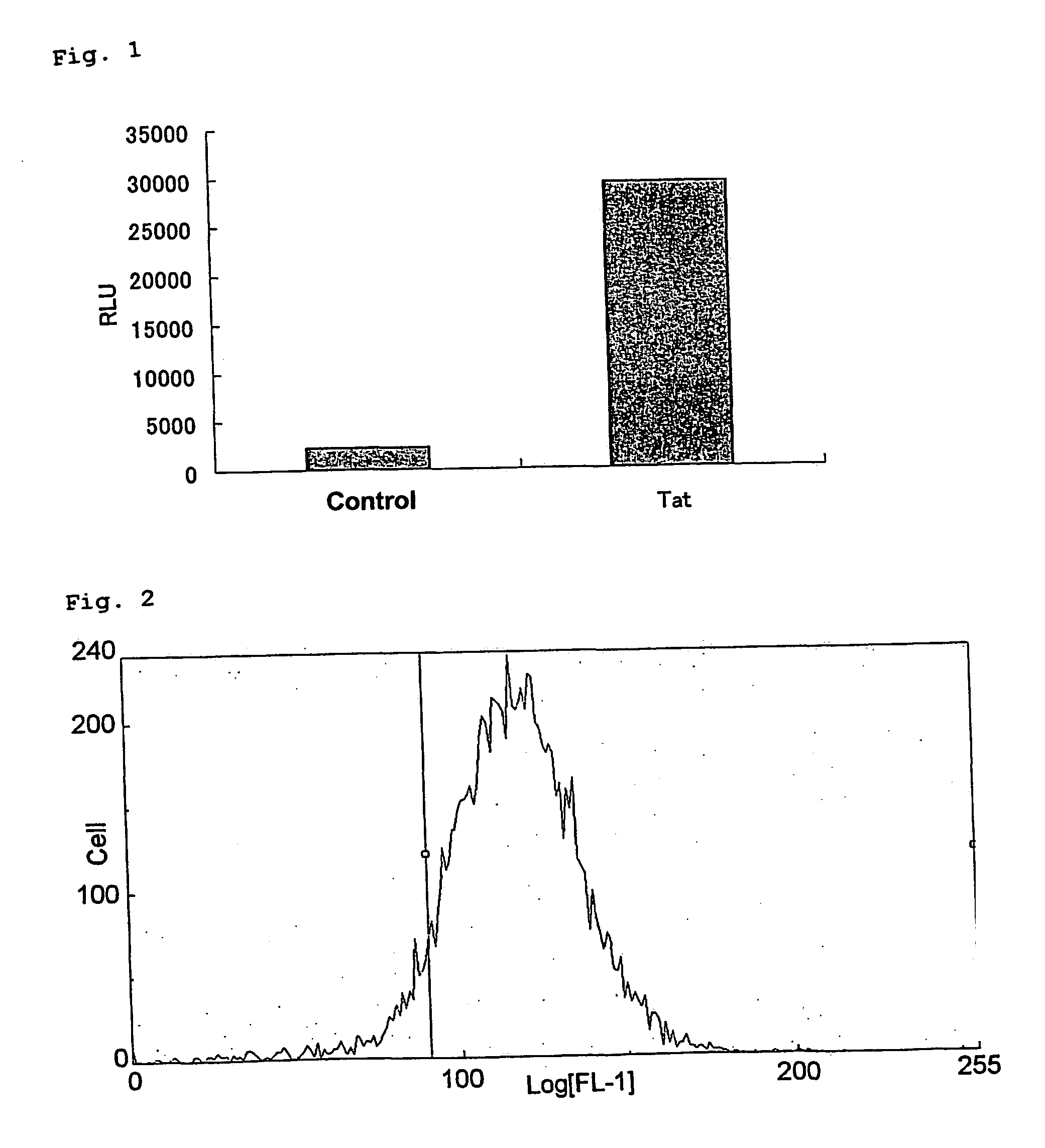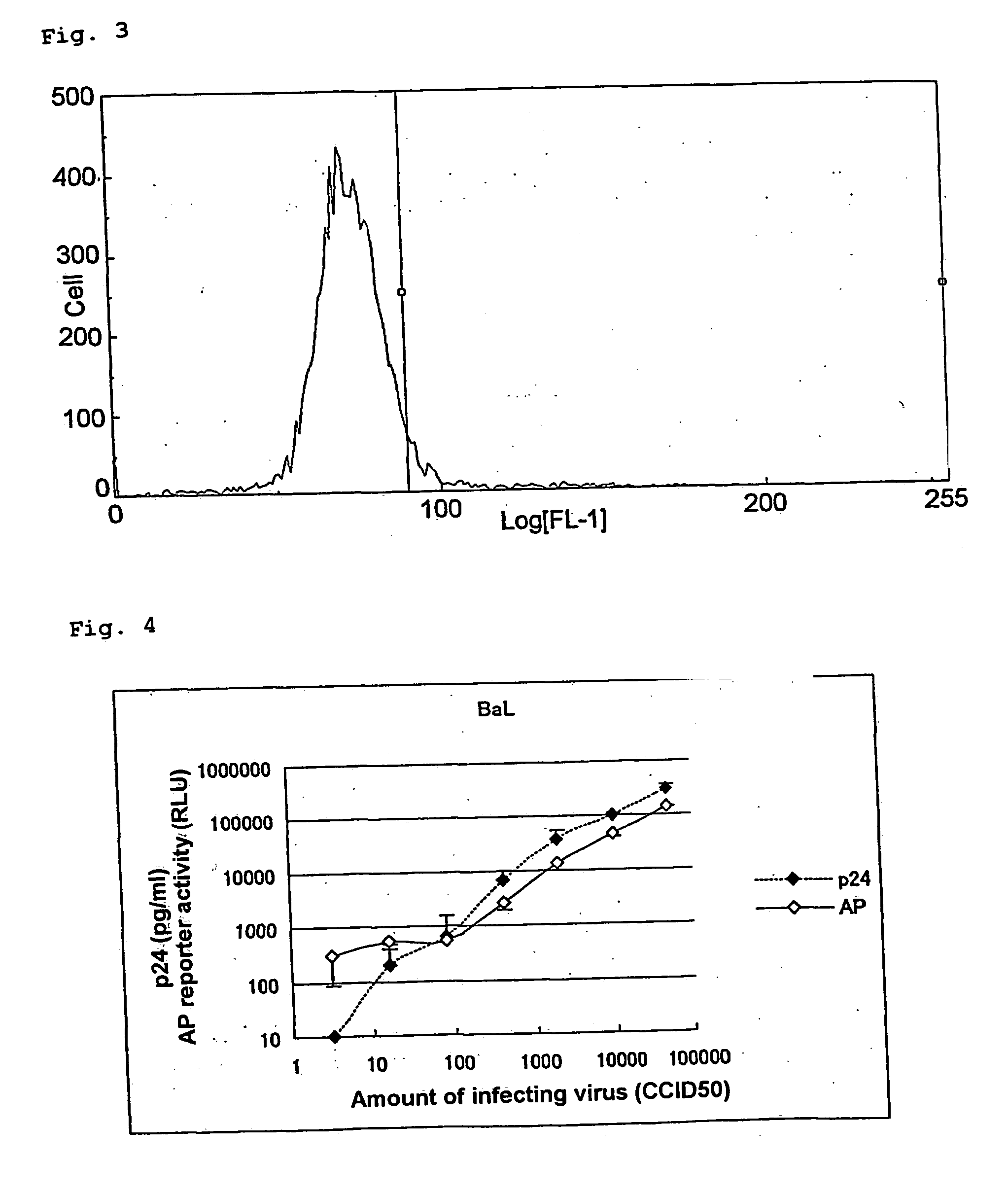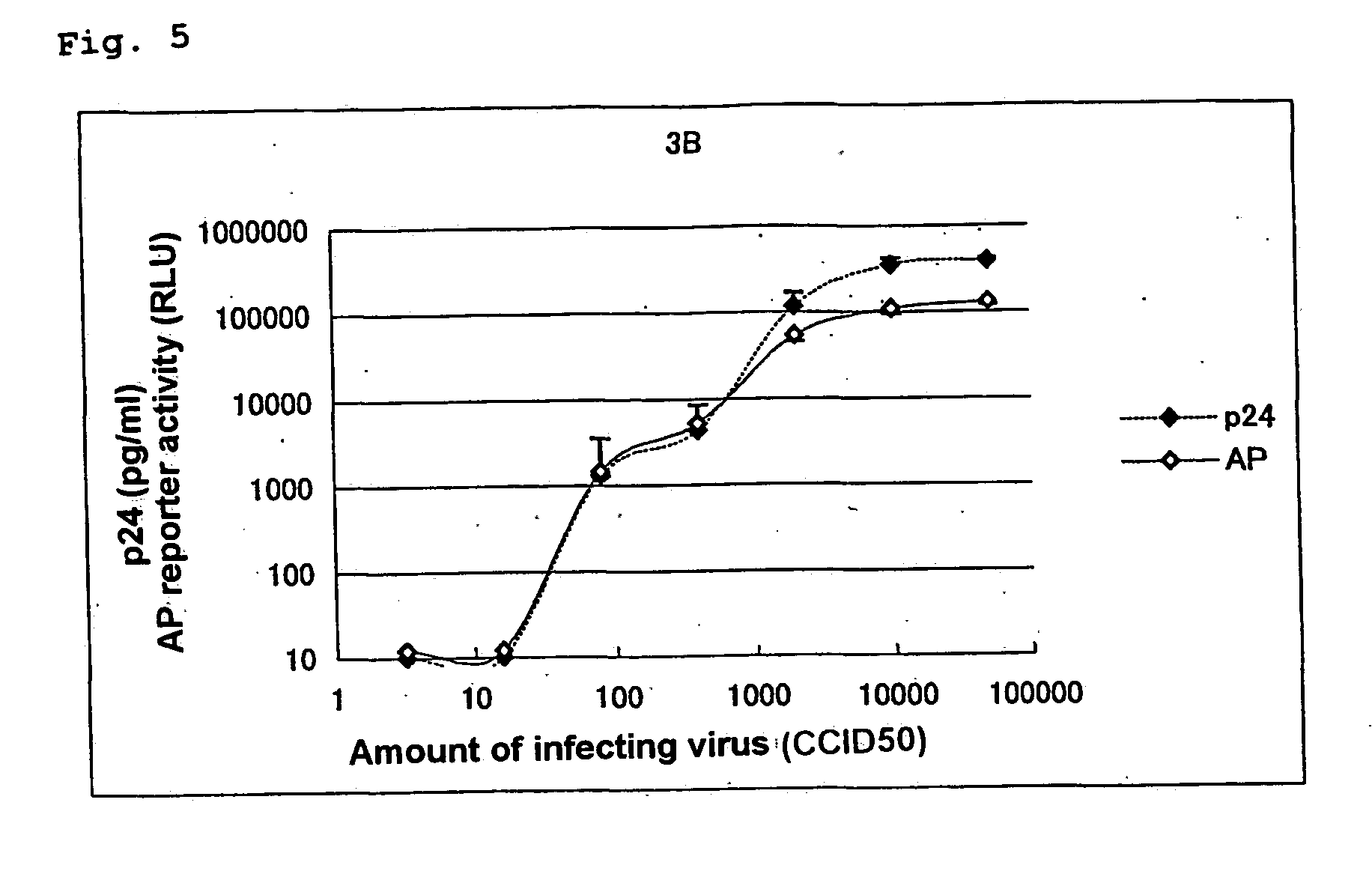T cell line and use thereof
a cell line and cell technology, applied in the field of t cell lines, can solve the problems of ineffective anti-hiv-1 agents, cell lines cultured in laboratories generally do not express a sufficient amount of ccr5, and cannot be sufficiently infected
- Summary
- Abstract
- Description
- Claims
- Application Information
AI Technical Summary
Benefits of technology
Problems solved by technology
Method used
Image
Examples
reference example 1
[0111] Establishment of MOLT-4 / CCR5 Cell Line
[0112] (1) Determination of the Concentration of Selective Agent (Geneticin)
[0113] MOLT-4 cells were cultured at 37.degree. C. in a 5% CO.sub.2 gas in RPMI1640 medium (Life Technology, US) containing 10% fetal bovine serum (FBS, manufactured by ICN, US), 100 U / ml penicillin G (Life Technology, US) and 100 .mu.g / ml streptomycin (Life Technology, US) (referred to hereinafter as MOLT-4 basic medium).
[0114] To the MOLT-4 basic medium was added geneticin (Life Technology, US) at a concentration of 100, 200, 300, 400, 500, 600, 700, 800, 900 or 1000 .mu.g / ml, and the cells were cultured at a density of 2.times.10.sup.3 cells / ml for 2 weeks, and the growth of the cells was observed under a microscope to determine the minimum concentration of the agent at which the growth was completely inhibited.
[0115] (2) Transfection
[0116] To 250 .mu.l of RPMI1640 medium free of FBS, penicillin G and streptomycin was added 15 .mu.l of cellfectin (Life Technolo...
example 1
[0126] Establishment of MOLT-4 / CCR5 / LTR-SEAP Cell Line.
[0127] (1) Determination of the Concentration of Selective Agent (Puromycin)
[0128] MOLT-4 / CCR5 cells were cultured at 37.degree. C. in 5% CO.sub.2 gas in RPMI1640 medium (Life Technology, US) containing 10%. fetal bovine serum (FBS, manufactured by ICN, US), 100 U / ml penicillin G (Life Technology, US), 100 .mu.g / ml streptomycin (Life Technology, US) and 500 .mu.g / ml G418 sulfate (Life Technology, US) (referred to hereinafter as MOLT-4 / CCR5 basic medium).
[0129] Puromycin (Sigma, US) was added at a concentration of 0.1, 0.2, 0.5 or 1.0 .mu.g / ml to the MOLT-4 / CCR5 basic medium, and the cells were cultured at a density of 2.times.10.sup.3 cells / ml for 1 week, and the growth of the cells was observed under a microscope to determine the minimum concentration of the agent at which the growth was completely inhibited.
[0130] (2) Construction of LTR-SEAP
[0131] A part of a LTR sequence was amplified by PCR using HIV-1-infected cell-derived...
example 2
[0144] HIV-1 Infection and Measurement of the Amount of Virus Antigen and Alkaline Phosphatase Activity
[0145] A test was performed to confirm that the alkaline phosphatase activity can be an index of viral growth similarly to the amount of p24 antigen, as described below.
[0146] A mixture of 2.times.10.sup.4 of MOLT-4 / CCR5 / LTR-SEAP cells and various CCID.sub.50 (cell culture infective dose 50%) of viruses was cultured at 37.degree. C. in a 5% CO.sub.2 gas. On fifth day after the infection, a quarter of the cells was subcultured for 5 days. On the tenth day after the infection, the culture supernatant was recovered, and the amount of p24 antigen and the alkaline phosphatase activity were measured by the following measurement methods. The viruses used were CCR5-tropic HIV-1 BaL strain and CXCR4-tropic HIV-1 3B strain. The experimental results are shown in FIG. 4 (HIV-1 BaL strain) and FIG. 5 (HIV-1 3B strain). In the figures, the amount of p24 antigen (pg / ml) and chemiluminescence (RLU...
PUM
| Property | Measurement | Unit |
|---|---|---|
| temperature | aaaaa | aaaaa |
| temperature | aaaaa | aaaaa |
| temperature | aaaaa | aaaaa |
Abstract
Description
Claims
Application Information
 Login to View More
Login to View More - R&D
- Intellectual Property
- Life Sciences
- Materials
- Tech Scout
- Unparalleled Data Quality
- Higher Quality Content
- 60% Fewer Hallucinations
Browse by: Latest US Patents, China's latest patents, Technical Efficacy Thesaurus, Application Domain, Technology Topic, Popular Technical Reports.
© 2025 PatSnap. All rights reserved.Legal|Privacy policy|Modern Slavery Act Transparency Statement|Sitemap|About US| Contact US: help@patsnap.com



